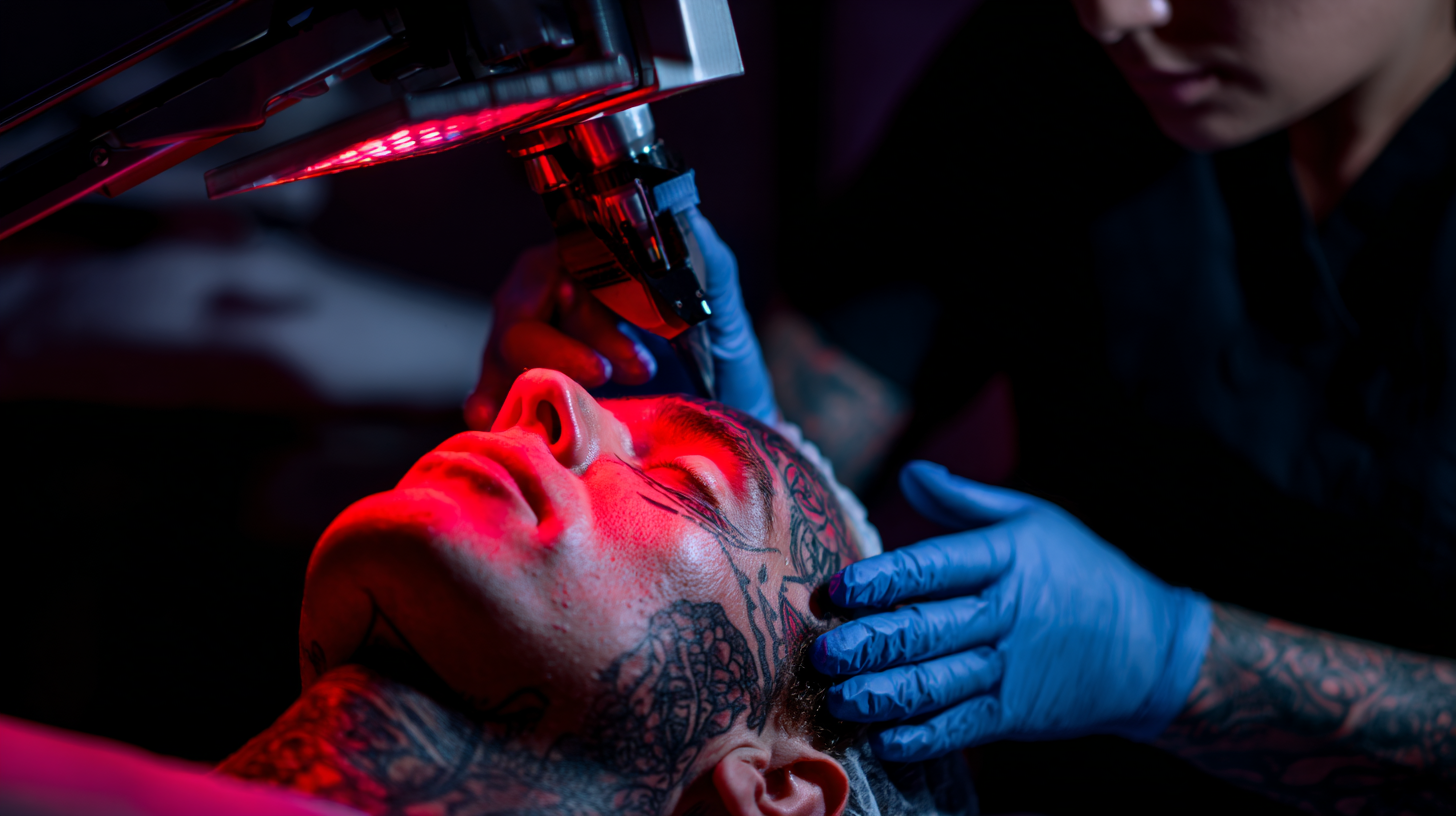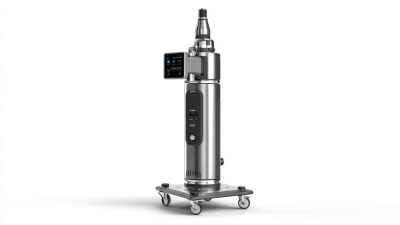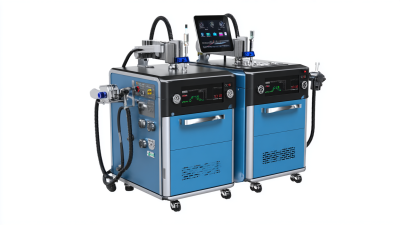Revolutionizing Aesthetics: The Science Behind High-Performance Laser Tattoo Removal Machines
In the evolving landscape of aesthetic treatments, the advent of the Laser Tattoo Removal Machine has marked a significant turning point, revolutionizing the way we approach tattoo removal. This technology combines cutting-edge science with advanced engineering to deliver high-performance results, catering to the growing demand for effective and safe tattoo removal solutions. Unlike traditional methods that often leave scars or require long recovery periods, modern laser systems utilize precise wavelengths of light to target ink pigments without damaging surrounding skin.

As we delve into the intricacies of this innovative device, we will explore the mechanics of its operation, the various types of lasers used, and the advantages they offer over previous techniques. Whether you're a practitioner seeking to expand your service offerings or an individual contemplating tattoo removal, understanding the fundamentals of the Laser Tattoo Removal Machine is essential for making informed decisions in this dynamic field.
The Evolution of Laser Technology in Tattoo Removal: A Historical Perspective
The journey of laser technology in tattoo removal can be traced back to the late 20th century when initial experiments were conducted using low-powered lasers. However, it wasn't until the development of Q-switched lasers in the 1990s that significant advancements were made. These lasers emit short, high-energy pulses that can effectively break down tattoo pigments without damaging surrounding skin. According to a study published in dermatology journals, the effectiveness of Q-switched lasers is notable, with up to 95% clearance rates for certain tattoo inks after multiple treatment sessions.
In recent years, innovations have continued to reshape the field, with picosecond technology emerging as a game changer. By delivering energy in trillionths of a second, picosecond lasers can significantly enhance the removal of complex colors and reduce treatment time. A report from the American Society for Dermatologic Surgery highlights that the use of picosecond lasers can lead to fewer sessions required for optimal results, thereby improving patient satisfaction.
Tips: When considering tattoo removal, it's essential to consult a certified practitioner who can tailor the treatment to your skin type and tattoo characteristics. Additionally, understanding the science behind the technology will help set realistic expectations regarding the number of sessions needed and the potential results. Always prioritize safety and efficacy by choosing FDA-approved devices for the best outcomes.
Understanding the Science: How Laser Wavelengths Target Tattoo Pigments Effectively
Laser tattoo removal has evolved significantly with advancements in technology, primarily through the understanding of how different laser wavelengths interact with various tattoo pigments. Each pigment absorbs light differently, which is why selecting the appropriate laser wavelength is crucial for effective removal. For instance, black ink, known for its broad absorption spectrum, can be targeted efficiently by Q-switched lasers emitting around 1064 nm. This wavelength penetrates the skin deeply, breaking down the ink particles into smaller fragments that the body’s immune system can then eliminate.
In contrast, colored inks require specific wavelengths to be effectively removed. For example, green and blue inks absorb wavelengths around 450 nm, while red inks respond better to wavelengths closer to 650 nm. High-performance laser machines are designed to deliver these precise wavelengths, allowing practitioners to customize treatments based on individual tattoo characteristics. This specificity not only enhances the effectiveness of the procedure but also minimizes damage to surrounding tissues, leading to a more comfortable experience for patients. As research continues to advance in this field, the future of laser tattoo removal promises even greater efficacy and safety for those seeking to erase their inked past.
Revolutionizing Aesthetics: The Science Behind High-Performance Laser Tattoo Removal Machines
| Laser Wavelength (nm) | Target Pigment | Effectiveness | Recovery Time (Days) |
|---|---|---|---|
| 1064 | Black, Dark Blue | High | 7-14 |
| 532 | Red, Green | Moderate | 10-14 |
| 755 | Light Blue, Green | High | 10-21 |
| 1064 + 532 | Multiple Colors | Very High | 7-21 |
| 450 | Light Blue | Moderate | 14-21 |
Comparative Analysis of High-Performance Laser Systems: Efficacy and Efficiency Data
The advancement of laser technology has significantly transformed the tattoo removal process, offering enhanced efficacy and efficiency. High-performance laser systems, such as Q-switched and picosecond lasers, utilize specific wavelengths to target tattoo pigments, breaking down ink particles for effective removal. A comparative analysis reveals that while traditional Q-switched lasers are effective, picosecond lasers often yield faster results with fewer sessions required, making them a popular choice among clinics.

When considering laser tattoo removal, it’s essential to evaluate the specific systems available. Look for machines that provide adjustable parameters to tailor treatments to individual skin types and tattoo characteristics. This adaptability not only improves outcomes but also minimizes potential side effects.
Tips: Before undergoing treatment, always consult with a certified professional who can assess your unique situation. Additionally, inquire about the technology being used, as the latest models may offer superior results. Remember to follow pre-treatment guidelines, like avoiding sun exposure, to ensure optimal recovery and results for your tattoo removal process.
Patient Safety and Comfort: Innovations in Laser Tattoo Removal Procedures
The landscape of tattoo removal has evolved dramatically, prioritizing patient safety and comfort with innovative laser technology. Recent advancements, such as picosecond laser technology and fractional laser systems, are leading the way in enhancing the efficacy and safety of procedures. These cutting-edge methods minimize discomfort and reduce the risk of adverse effects, allowing patients to feel more at ease during their treatment journey. With the growing concern over unregulated laser treatments, these breakthroughs reflect a commitment to not only effectiveness but also to safeguarding the well-being of individuals choosing to remove their tattoos.

As patients explore their options, clinics are emerging as leaders in the field, offering specialized services designed to ensure a painless experience. With many providers focusing on patient comfort, the newest techniques combined with a robust infrastructure for post-treatment care are becoming the norm. Such innovations make tattoo removal less daunting and more accessible, helping individuals reclaim their skin with confidence. In this evolving sector, the emphasis remains on combining technological progress with a patient-centered approach, ensuring that safety and comfort are paramount in every procedure.
Future Trends in Tattoo Removal: Integrating AI and Machine Learning Technology
The future of tattoo removal technology is poised for transformation through the integration of AI and machine learning. Recent reports from the Global Tattoo Removal Market indicate that the industry is expected to reach $1.5 billion by 2025, driven largely by advances in laser technology. With higher precision and safety, the latest laser tattoo removal machines are now equipped with intelligent algorithms that can analyze skin types, tattoo ink colors, and depth, ensuring optimal treatment customization. This level of personalization not only enhances the effectiveness of the removal process but also significantly reduces recovery times and potential side effects.
Moreover, AI is revolutionizing the way practitioners approach tattoo removal. Machine learning models can now predict treatment outcomes based on extensive datasets gathered from previous procedures. A report by Market Research Future highlights that AI-enhanced systems can potentially increase client satisfaction rates by over 30% by providing tailored treatment plans that adapt in real-time. As the technology continues to evolve, practitioners will increasingly rely on these intelligent systems, leading to safer, faster, and more efficient tattoo removal experiences for clients worldwide. The fusion of aesthetics and technology is not just a trend; it is set to redefine the tattoo removal landscape as we know it.
Future Trends in Tattoo Removal: AI Integration and Technology Improvements
The following bar chart illustrates the anticipated metrics of laser tattoo removal efficacy and patient satisfaction rates influenced by AI technology over the next five years.
Related Posts
-

7 Best Tattoo Removal Machines for Effective and Safe Treatment in 2023
-

A Comprehensive Comparison of Laser Tattoo Removal Machines for Effective Skin Rejuvenation
-

2025 Market Insights: How to Choose the Best Tattoo Removal Machine for Your Business
-

How to Effectively Choose a Laser Tattoo Removal Machine: Insights from Industry Experts and Statistics
-

Ultimate Checklist for Choosing the Best Tattoo Removal Machine in 2023
-

Ultimate Guide to Choosing the Best Diode Laser Machine for Your Business
